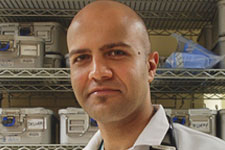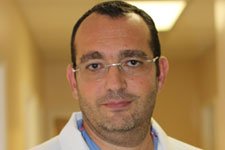Laparoscopic Treatment of Endometriosis
Endometriosis Treatment
For many women the laparoscopic procedure when performed for the first time can be stressful. There is always the anxiety about what the doctor will find. This usually is the cause of the concern as the actual laparoscopic procedure.
Laparoscopy is widely used for treating endometriosis. Usually this method is used to diagnose and treat mild to moderate cases.
Laparoscopic treatment of endometriosis is more convenient, compared to laparotomy treatment of endometriosis, as the incisions are very small and the recovery period is shorter. The incisions are usually done near the navel. The surgeon usually makes two small abdominal incisions, and through them he inserts the laparoscope and all the other instruments needed for the procedure.
Why is Laparoscopy performed?
Laparoscopy is used to diagnose and treat endometriosis. Laparoscopy is first used to diagnose and examine the pelvic organs, but also to remove any possible implants or scar tissue.
Laparoscopy is performed in cases when:
• Endometriosis is the possible cause of infertility. In these cases any possible and visible scar tissues are removed. The scar tissue can interfere with a woman’s fertility.
• For treating endometrioma (a cyst on the ovaries)
• Pain caused by endometriosis, which has continued or has returned after the hormone therapy
• To treat severe pain caused by endometriosis, which can’t be relieved with other medication methods
• To treat and remove the scar tissue found in the pelvic organs and abdomen that is thought to interfere with internal organs like the bladder, rectum, bowls, etc.
Laparoscopic procedure
Laparoscopy is usually performed under general anesthesia. However, in some cases it can be performed under local anesthesia or spinal anesthesia.
The procedure usually lasts 30-45 minutes, but this all depends from what is exactly performed. Laparoscopy can serve as a diagnosing method of endometriosis, but also as e treatment method. Two small incisions in the abdomen are done. Through the incisions the abdomen is inflated with gas. The gas used to inflate the abdomen is usually carbon dioxide or nitrous oxide in order to push the abdominal wall away from the organs. This gives a better view of the organs and a greater space for working. Additional incisions are possible if other instruments are needed during the procedure.
Lesions of endometriosis can be seen with the naked eye when they have a reasonable size. However, small lesions of endometriosis can’t be seen with naked eye. For an accurate diagnosis, small tissue samples should be taken for biopsy.
Risks and Complications
Laparoscopic procedure when performed correctly has a faster recovery time and less discomfort compared to conventional surgery. However, like any other surgery it has its possible risks and complications. Any form of surgery will cause some trauma to the body and normally it will cause pain and post-operative reactions. Possible risks and complications of laparoscopic treatment of endometriosis are:
• Uncontrolled bleeding, which will result need laparotomy treatment to stop the bleeding
• Pelvic infection
• Damage to the nearby organs like bladder, bowel or uterus
• Formation of adhesions after the surgery, etc.













